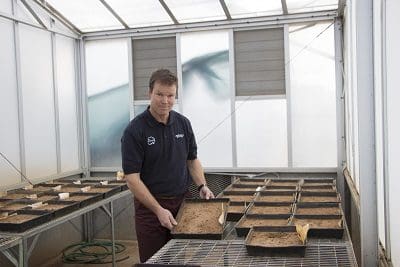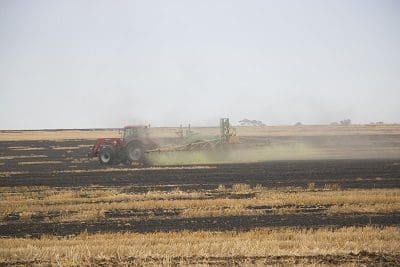Ask a WeedSmart Expert
NOW is the time to take pre-emptive action to reduce the incidence of glyphosate resistance in weeds.

NSW DPI weeds research agronomist Eric Koetz says residual herbicides need to play a part in the control of glyphosate resistant weeds in crop and in the fallow.
NSW Department of Primary Industries (DPI) weeds research agronomist, Eric Koetz, says the majority of agronomists and a growing number of farmers recognise the need to implement management practices that help protect the efficacy of glyphosate in farming systems.
“We know that it takes between 14 and 19 years of routine use of glyphosate to evolve resistance,” he said.
“We have now had Roundup Ready cotton for 15 years and there are many instances of glyphosate resistant populations of weeds such as fleabane, windmill grass and barnyard grass.
“The 2 + 2 + 0 strategy developed in the cotton industry to protect glyphosate and Roundup Ready technology is also applicable to other farming systems.
“When planning an integrated weed management program, the Cotton RDC recommends including two non-glyphosate tactics in-crop, two non-glyphosate tactics in the fallow and ensuring zero survivors.”
This is where the use of residual herbicides can play a part, along with non-herbicide tactics, such as strategic tillage in both summer and winter crops and in fallow situations.

Residual herbicides applied at seeding or soon after harvest help reduce the number of glyphosate applications across the cropping cycle.
Including residual herbicides in both the fallow and crop phases increases the diversity of herbicide modes of action and places downward pressure on the weed seed bank.
“Roundup Ready technology has been of great benefit to the cotton industry, and has a fit in other farming systems too, but it cannot stand alone. It must be supported and protected through an integrated weed management strategy,” Mr Koetz said.
“To preserve glyphosate it is necessary to reduce the total number of applications across the crop rotation.”
What are the non-glyphosate options for in-crop weed control?
Short answer: Residual herbicides applied at sowing, inter-row cultivation, crop rotation, maintaining ground cover and increasing crop competition.
Longer answer: Residual herbicides that require incorporation are best applied at sowing. There are some older herbicides that have not been used for several years that are still quite effective and could make a come-back to farming systems that have come to over-rely on glyphosate. There are also new use patterns being registered for a number of different products that can be used to add diversity to control weeds at different growth stages or to control later in-crop germinations. Increasing crop competition and promoting rapid canopy closure has a significant impact on in-crop germination. Diversifying the crops grown automatically makes more herbicide options available to use against weed populations that may be evolving glyphosate resistance.
What are the non-glyphosate options for controlling weeds in the fallow?
Short answer: Residual herbicides applied soon after harvest, strategic tillage, double knock, optical sprayer, cover cropping.
Longer answer: Choose residual herbicides carefully. Some products have long plant back periods and will reduce the grower’s options for the following season.
Tillage is widely practiced in irrigated cotton and is an effective way to eliminate weeds. In dryland systems tillage operations may be best suited to low crop residue situations such as following a chickpea crop. The cultivation operation may be done across the whole paddock or in small patches and can be coupled with paddock renovation, the incorporation of soil ameliorants or deep banding of nutrients. Several research projects are currently investigating the usefulness of cover cropping and brown manuring on weed numbers.
What can be done to ensure there are no survivors?
Short answer: Scouting and chipping, optical sprayer, patch tillage.
Longer answer: Actively looking for survivors must become a key management practice. A few large plants that have survived all control tactics can generate a huge number of seeds that are very likely to carry some level of herbicide resistance. If these plants are physically removed before they set seed they will not contribute to the seed bank for future germinations.
Source: Weedsmart
……………….
How to ask a WeedSmart question
Ask your questions about managing glyphosate resistance across the crop rotation on the WeedSmart Innovations Facebook page WeedSmartAU, Twitter @WeedSmartAU or the WeedSmart website http://www.weedsmart.org.au/category/ask-a-weedsmart-expert/
‘WeedSmart’ is an industry-led initiative that aims to enhance on-farm practices and promote the long term, sustainable use of herbicides in Australian agriculture.



HAVE YOUR SAY